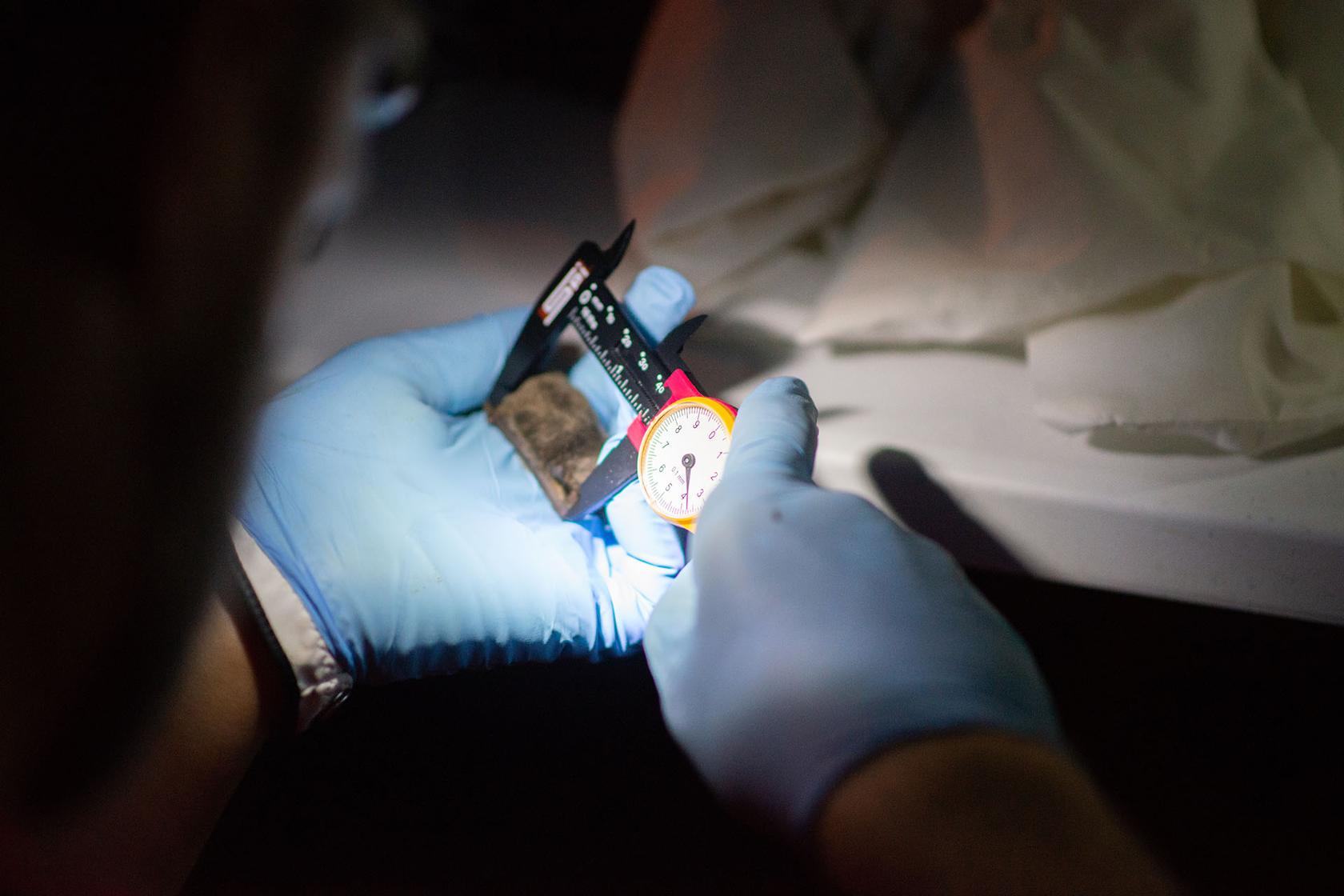Bat biology: how the outdoors becomes a classroom
Monday, October 22, 2018 9:00 AM
News, Academics, Science and Technology
Pittsburg, KS
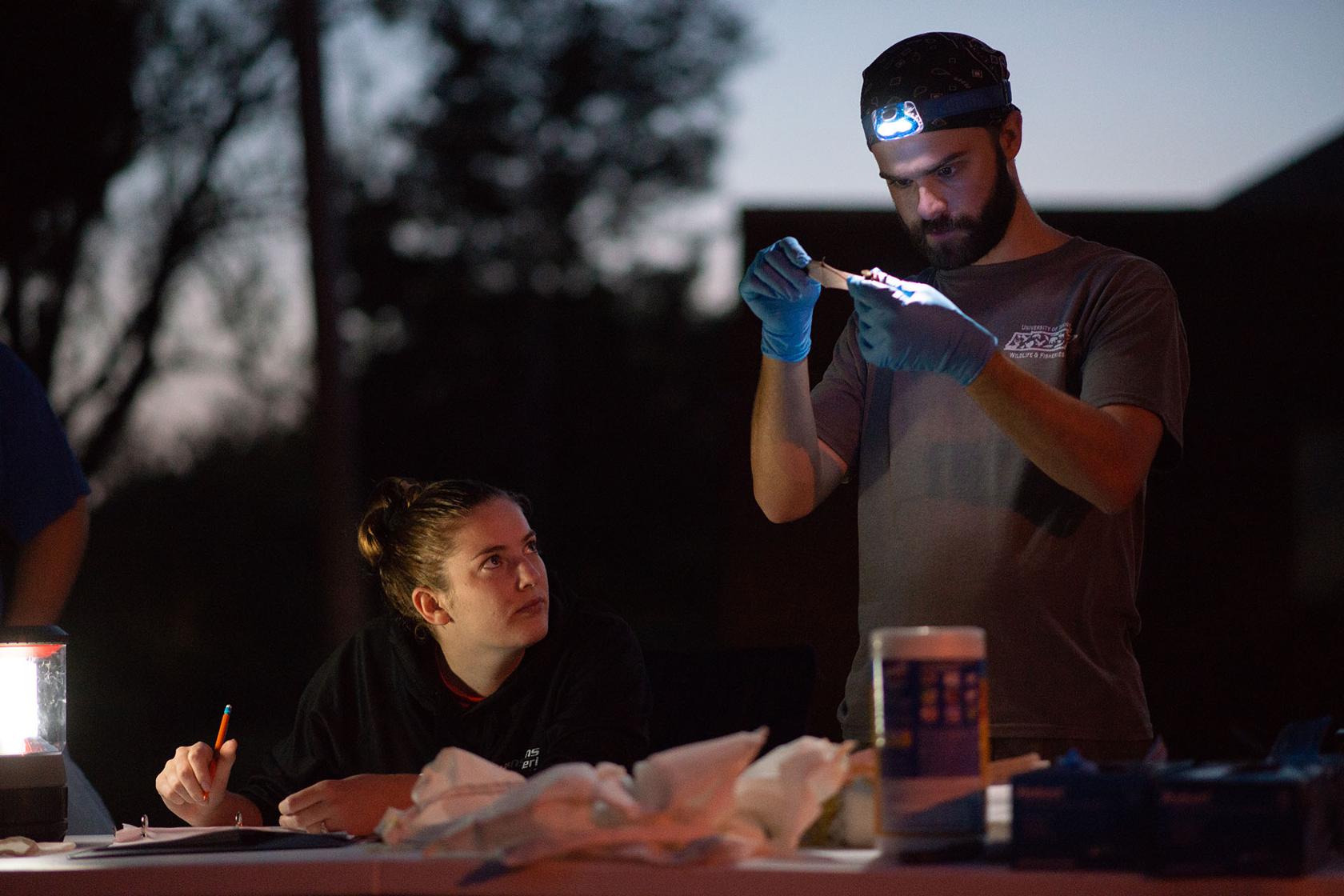
It has all the makings of a would-be Halloween movie: bats fly out of storm tunnels starting at sundown. Clouds move in front of the moon.
The bats flutter this way and that, their numbers increasing as the hour grows late.
But for students in Andrew George’s biology program, the scene has all the makings of the ideal classroom.
“You can learn some things out of a text book or a lecture, but this is so exciting and so valuable to experience in real life,” said Jake Wright, a senior in field biology from Douglas, Kansas.
A few times a week since Spring, Wright and other students have set up infrared video equipment in order to record and count bats as they emerge from their roosts, often working until midnight or later. Occasionally they use harp traps — traps comprised of fishing line — in order to trap the bats to record biometrics.
Funded by a grant from the Kansas Department of Wildlife Parks & Tourism, they're on a mission to establish a baseline of data that can be useful to scientists in the future.
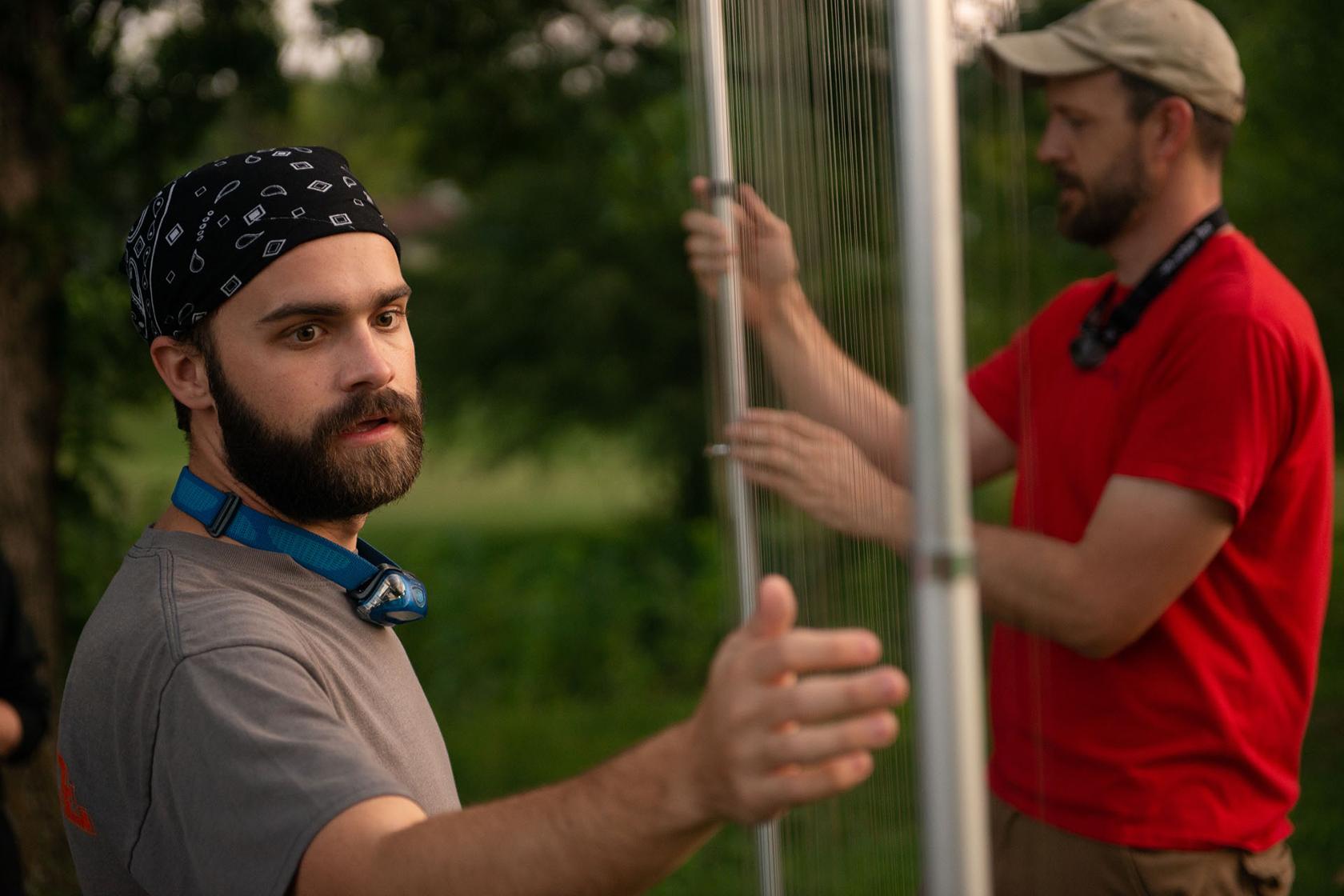
According to the U.S. Forest Service, bats are valuable as pollinators, much like bees that have captured public attention in recent years. Elsewhere in the world, bats disperse seeds that grow into bananas, avocados, and some 300 other plant species beneficial to the environment and to humans.
Here in Kansas, they eat thousands of bugs each night — a natural form of pest control.
But a deadly fungus that grows on bats while they hibernate has been making its way west from New York, killing off more than 5 million of them since 2006. Called white-nose syndrome, it was detected in Kansas for the first time this year.
“Everyone is very concerned,” George said. “We know that the syndrome can devastate populations of some species, but we don’t know how it will impact gray bats, which are a federally endangered species, or other species in Kansas.”
Enter his students.
“We’re counting them to see how populations change over time. To do that, you have to establish a baseline and then continue to count them,” said Michael Barnes, a graduate student in biology from Hendersonville, Tennessee, who has previous field experience with bats and serves as a mentor to undergraduate field biology students.
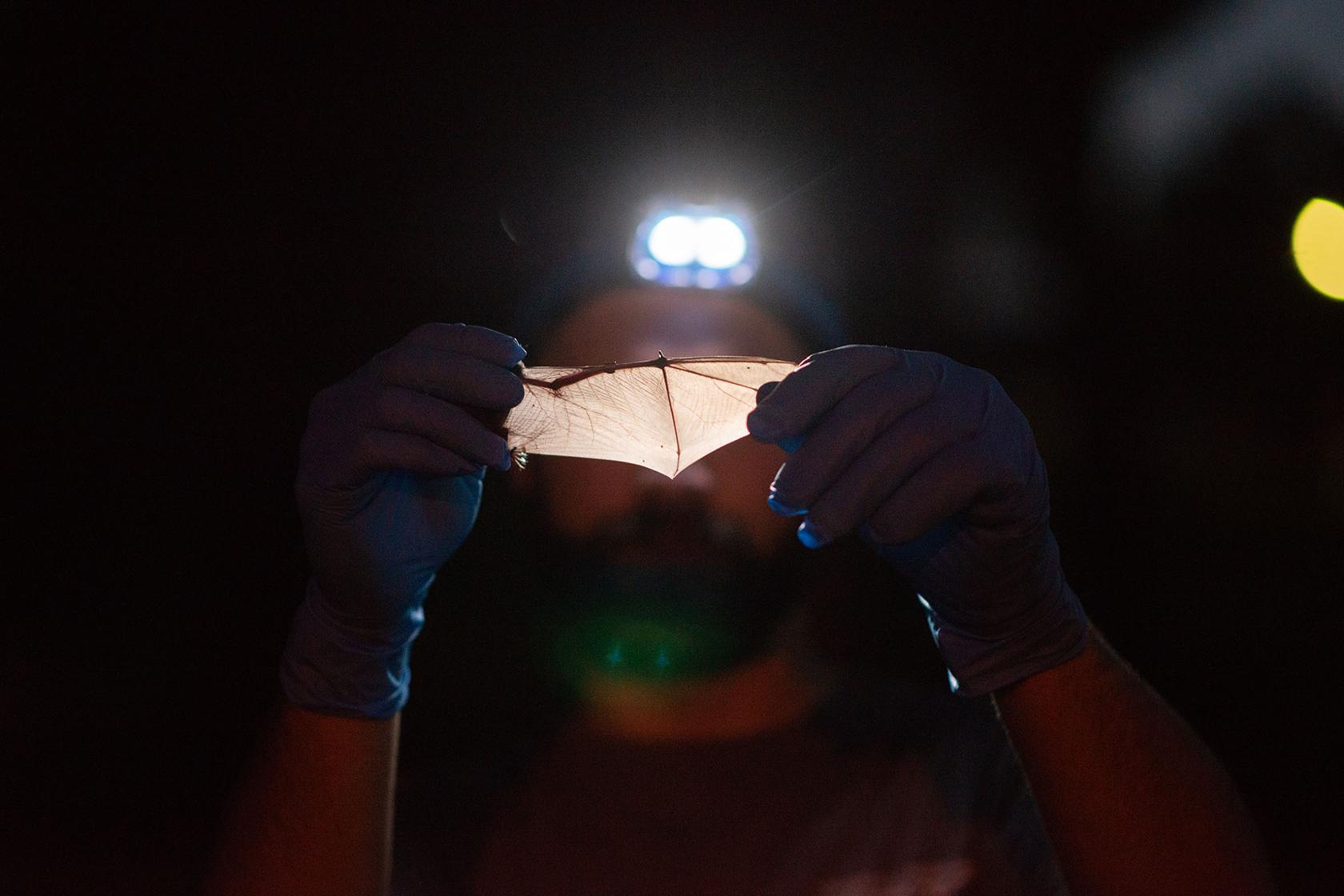
Bats can be tested for white-nose syndrome with a swab of their wings. Handling them carefully, Barnes is able to do that as well as other useful biometric screenings, and band a few with radio transmitters to track their migration patterns.
Tests on bats trapped over the summer were negative — not surprising, Barnes noted, as it affects populations the most during winter hibernation.
Wright takes the recordings back to the lab in Heckert-Wells, where he can slow them down significantly to do a frame-by-frame count.
George and his students also have assisted the State with collecting bat guano from sites in Pittsburg so that they can conduct tests on it. And, they assisted a group of bat researchers on a three-day field trip to Stilwell, Oklahoma, where they hiked to caves and set up harp traps and nets.
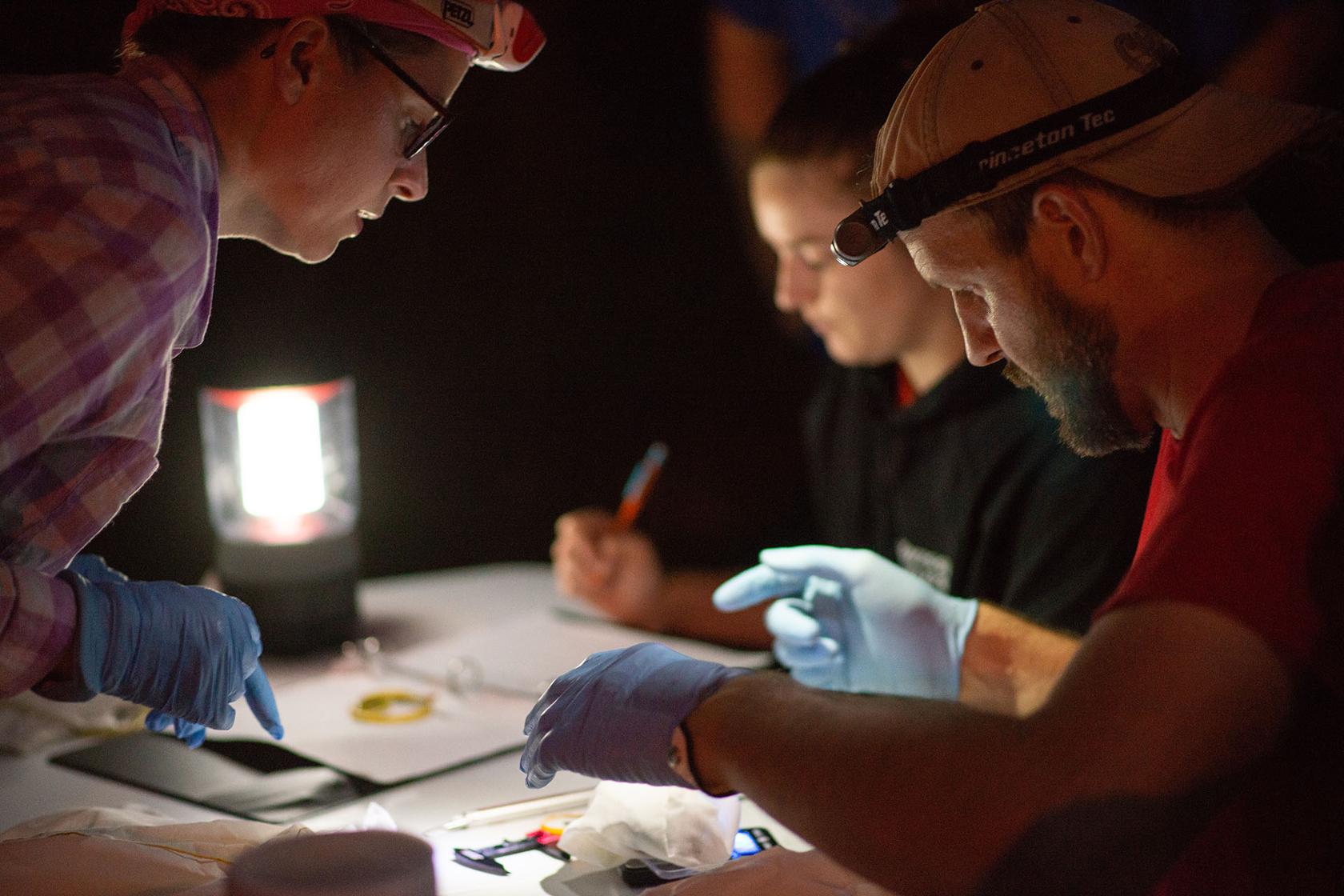
Maggie Murray, a sophomore from Frontenac pursuing an emphasis in wildlife ecology and conservation, said going on that trip opened up numerous career options to her that she hadn’t yet considered.
“I was measuring the forearm length of bats, looking at their wings for signs of white-nose, helping to put radio trackers on them,” she said. “It took what I’m learning here at school way beyond just the classroom.”
Rachel Wood, a senior in field biology from Jacksonville, Florida, described the bat research project as “eye opening.”
“Field work like this helps us learn what careers we could do in the future — things we had never even heard about or considered until now.”
That’s the goal of the field biology program, Barnes said: “We want to get students out there in the field, outside of the classroom. And at the same time, we’re contributing to science.”
Learn more about PSU's Biology program at www.pittstate.edu/biology/
